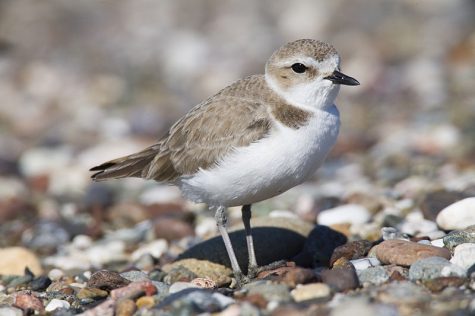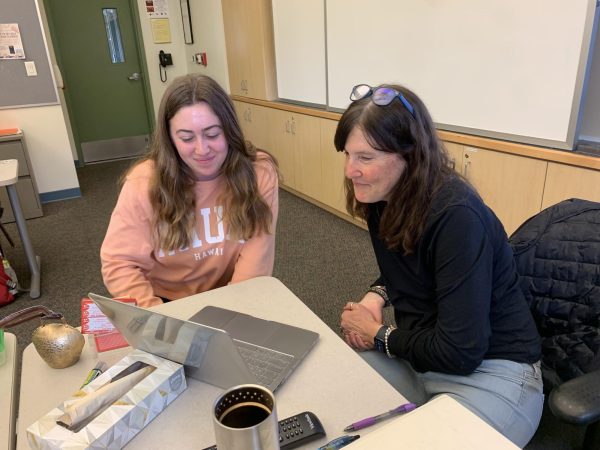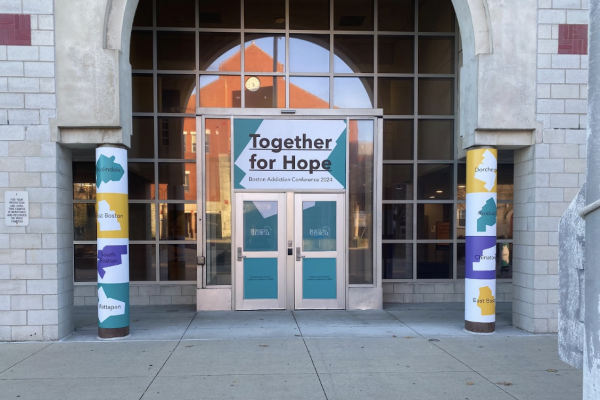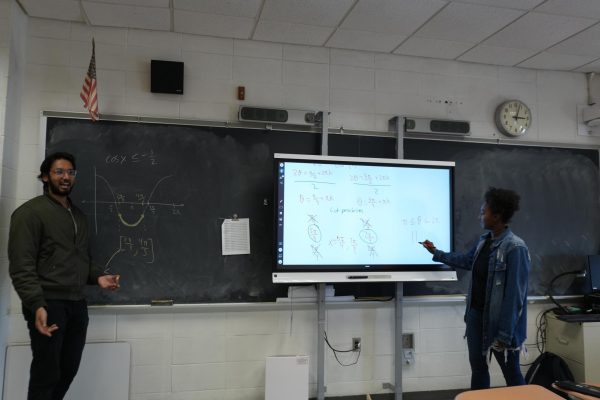Climate legislation signals a renewed focus on the San Francisco Bay
Baylands Morning / Ingrid Taylar / Wikimedia Commons / CC BY 2.0
A flock of birds congregate on the bank of an estuary that flows into the San Francisco Bay.
February 22, 2021
The San Francisco Bay, one of the nation’s most valuable but neglected ecosystems, faces an existential threat posed by climate change.
Throughout the Bay Area, rising sea levels have begun to inundate the lowest-lying areas of the bay’s coastline. Climate change has reshaped the habitats of many Bay Area animals, devastating the nesting locations of birds such as the Western Snowy Plover and putting multiple species at risk of extinction, according to the Golden Gate National Parks Conservancy.
These threats have culminated in an increase in public awareness of the effects of climate change in the Bay Area. Intensifying efforts to reduce climate change both now and in the future, as well as preparing for and adapting to its inevitable impacts, is essential to the sustainability of the Bay Area.
A coalition of Bay Area congressional representatives and local conservation advocates, led by Democrat U.S. Rep. Jackie Speier of California’s 14th Congressional District, is spearheading the effort to pass the San Francisco Bay Restoration Act. This bill would provide increased federal funding for Bay Area restoration, water quality, and protection from sea-level rise. It would allot $50 million per year for five years to support the restoration and protection efforts of the San Francisco Bay and establish a San Francisco Bay Program Office within the Environmental Protection Agency.
The bill, formally denominated as H.R. 1132 and newly introduced as H.R. 610, would direct the EPA to annually compile a list of funding priorities for projects or studies that support environmental projects in the San Francisco Bay estuary. The projects or studies must include efforts that address “(1) water quality improvement; (2) wetland, riverine, and estuary restoration and protection; (3) nearshore and endangered species recovery; and (4) adaptation to climate change,” according to a summary of the bill authored by the Congressional Research Service (CRS) of the Library of Congress.
Funding

On Jan. 28, Speier held a press conference to announce the new legislation alongside Democrat U.S. Rep. Jared Huffman of California (chair of the House of Representatives’ Subcommittee on Water, Oceans, and Wildlife), California Secretary for Environmental Protection Jared Blumenfeld, and Save the Bay Executive Director David Lewis.
The bill’s introduction, with 10 co-sponsors, including House Speaker Nancy Pelosi, Huffman, and several other congressional representatives from California, came after five failed attempts to pass the act, spanning a period of 11 years. The bill was most recently passed by the House in 2019 but never considered by the Senate.
Despite these setbacks, Speier remains adamant that the bill will finally be passed into law with the arrival of a new administration and the Democrats’ majority control in the Senate.
“Last year, the House signaled its overwhelming support for the San Francisco Bay Restoration Act, when it voted to pass it not once, but twice; the second time as part of the Moving Forward Act. [With] the Democrats in charge of the House, Senate, and White House, I’m confident that we can finally sign this legislation into law and ensure that the San Francisco Bay receives the funding it needs and deserves,” Speier said.
Huffman agreed with Speier, emphasizing the significance of federal representation on climate issues in Congress. With federal dollars flowing into other municipalities such as the Chesapeake Bay in Maryland and Puget Sound in Washington state, Speier is actively attempting to highlight the unequal distribution of funds amongst deserving regions.
“San Francisco Bay has been short-changed compared to other estuaries in the U.S. Between 2008 and 2016, EPA geographic programs invested only $45 million into the San Francisco Bay, while Puget Sound received over $260 million and the Chesapeake Bay $490 million. That’s ten times as much – and the disparity becomes even more pronounced when you consider the populations served. A mere $6 was spent on the Bay for each resident of the Bay Area, while almost $30 was spent for each resident living near the Chesapeake Bay and almost $60 for residents near Puget Sound. This bill would also finally give the Bay the recognition it deserves,” Speier said in a statement.
Independent reports concur with Speier’s contention and underscore the urgency of the situation. In August 2018, the GAO published a report on the S.F. Bay Delta Watershed and found that the lack of sufficient federal funding is one of the biggest risks to long-term restoration efforts needed for the survival of numerous species, including more than 100 endangered species.
Speier also implored the federal government to support the San Francisco Bay, which plays an integral role in the local and U.S. economy. According to Speier, the San Francisco Bay produces over $370 billion in goods and services annually and supports more than 4 million jobs.
Huffman agreed, highlighting the significance of the San Francisco Bay in both ecological and economic terms.
Huffman said, “By almost any measure in terms of ecological significance, and what it means to the economy in terms of the outdoor recreation, commercial, fishing economy, travel, and tourism industries, there’s nothing like the San Francisco Bay, and it’s high time we make sure we get our fair share of federal funding.”
Environmental Impact
In ecological terms, the importance of healthy wetlands in the Bay Area cannot be overstated. Wetlands are key to ensuring water quality, flood protection, and shoreline erosion control. Blumenfeld underscored the usefulness of wetlands in combating the effects of climate change.
“Wetlands present us with a huge opportunity to buffer the impacts [of climate change], acting like a sponge. They allow us to deal with the impacts of sea-level rise in a natural way that concrete and other barriers are not going to be able to do,” Blumenfeld said.
Lewis explained the significance of acting quickly to combat the effects of climate change.
“Tidal marshes can actually adjust to changes in sea level if they don’t happen too quickly,” Lewis said. “This is because they accrete sediment; they hold sediment from the water and they can increase or lower winds when the sea level rises, which has happened slowly. If it happens quickly, then the sea level would be too high for new tidal marshes to form.”
Lewis expressed optimism about the prospects of the tidal marshes’ restoration, but he did acknowledge that action would need to be taken in the near future.
“Scientists tell us that we need to start revegetating tidal marshes in this decade before sea-level rise gets too high too fast and makes it more difficult. Those marshes may be able to stay ahead of sea-level rise,” Lewis said. “Now, we still need to combat the amount of climate change, and the emission of greenhouse gases, but we can’t wait to start doing this adaptation and tidal marsh restoration if we want it to work.”
Despite a clear need for funds and a lack of support from the federal government for many years, Blumenfeld noted that conservation groups have been doing their part to attempt to preserve the wetlands in and surrounding the San Francisco Bay.
“There’s been incredible efforts, since 1998, that have put back in place about 20,000 acres of wetland in and around the San Francisco Bay, but still we have a goal of getting to 100,000 acres of restored wetlands,” Blumenfeld said.
Even with the formidable efforts of these conservation groups, Blumenfeld emphasized the need for funding from the federal government to help with research on wetlands.
Blumenfeld said, “We really need to understand how these natural systems can help us. The funding that the bill would provide for the EPA is critical to moving that work forward.”
The Federal, State, and Local Partnership
California leaders maintained that the federal government funding for the conservation and preservation of the San Francisco Bay will reduce the negative impact of climate change and provide significant economic returns on that investment.
“The cost of doing nothing in climate change is extraordinarily higher than the cost of taking action today, and every single dollar we put in today will save about $6,” Blumenfeld said. “The same is true with nearly any aspect of climate change, so looking at this, it’s a great investment in the future.”
Blumenfeld’s claims have been supported by numerous federal and independent studies, chiefly among them, one issued by the National Institute of Building Sciences, titled “Natural Hazard Mitigation Saves: 2017 Interim Report.”
Blumenfeld also stressed the openness of California Gov. Gavin Newson’s administration to working cohesively with the federal government in an attempt to solve the climate crisis plaguing California.
Blumenfeld said, “The Newson administration is incredibly proud to do anything to support [the bill] and Congress and to get this funding immediately to work to protect a place that 8 million of us call home.”
Speier noted the importance of the new office within the EPA, one of the many changes proposed by the bill in an effort to increase collaboration between the state, local, and federal governments.
“Having a dedicated office within the federal government is like having a guardian angel over the bay in terms of being able to measure the needs and to request the funding [needed],” Speier said.
Huffman also commented, stressing the need for a partnership between the federal and local governments.
“None of us have the funds to do this alone, but rather, we need to do it in a partnership. You’ve got to have the institution and a mechanism for that partnership to function under,” Huffman said. “The local partners are ready to go; they just need the structure and federal funding.”
Lewis emphasized the importance of passing the bill as he underscored residents’ dedication to preserving the San Francisco Bay.
“Most of our money has come from our own residents taxing ourselves through the regional Measure AA parcel tax […] but not from the federal government in a big way. This bill would leverage our local tax budgets and restore the San Francisco Bay with federal funds, not just for marsh restoration but for pollution reduction and other benefits,” Lewis said.
Speier added that the funds coming from Bay Area residents’ parcel taxes would not be sufficient, and Bay Area restoration required federal support.
“[To] underscore the amount of local monies that have been generated, the Measure AA parcel tax will generate $500 million in local funding for the San Francisco Bay, but that’s still only a third of the funding estimated to restore 36,000 acres of tidal marsh, and to maintain it,” Speier said.
Lewis noted the need to address the effects of climate change, which would disproportionately affect lower-income communities in the Bay Area.
“[Wetlands] provide natural protection for communities at risk of flooding, and these communities near the shoreline of the San Francisco Bay are some of the most underserved communities in the Bay Area,” Lewis said.
In speaking to the inherent inequity presented by the development of lower-income homes in vulnerable regions of the Bay Area, Lewis emphasized the need to protect communities that would be at a deficit if a major climate disaster were to occur. Soon after, Lewis spoke to how that action needs to be taken quickly to mitigate the risks of climate change.
Lewis said, “Climate change is the big threat to the San Francisco Bay and fortunately we have this amazing opportunity to adapt to climate change with wetlands if we act quickly and invest.”
Finally, Lewis acknowledged President Joe Biden’s openness to working with states and local governments on mitigating climate change.
“Biden has underscored his commitment to tackling climate change with his policy announcements, appointing committed climate leaders throughout the federal agencies, and the San Francisco Bay is one of the best places for the President and Congress to show that the climate agenda includes preparing for rising seas, and for more extreme weather events,” Lewis said.
The actions of Biden mark a major shift away from the harmful policies of the previous presidential administration. Despite this, Huffman wants to encourage accountability on the federal side of the agreement.
Huffman said, “The unique thing about this effort to bring more federal dollars to the San Francisco Bay is that our nine-county Bay Area region totally understands the need and has actually put money on the table. Now it’s time to bring the federal side of the partnership forward.”
The Push for the Finish Line
Stressing a united effort to address the pressing need for federal funds to combat climate change in the Bay Area, Huffman conveyed the level of support that the co-sponsors are providing for this bill, and he spotlighted the contributions that Speier has made.
Huffman said, “Jackie Speier has been a champion for the San Francisco Bay in the U.S. Congress since she arrived [in Congress], and before that because she represents a district where her constituents understand the importance of this amazing resource.”
Speaking to Speier, Huffman conveyed his optimism about the prospects of the bill being passed.
“I think this could be the year that your decade-long effort finally gets across the finish line, and I’m very privileged to be working with you,” Huffman said.
Speier reinforced her commitment to serving the Bay Area and working towards mitigating the detrimental effects of climate change.
Speier said, “We’re asking for a fair share. It’s way past time that the [San Francisco Bay] gets the recognition it deserves in terms of resources, and we are not going to stop for anything less than a yes.”
This story was originally published on Scot Scoop News on February 20, 2021.





























![IN THE SPOTLIGHT: Junior Zalie Mann performs “I Love to Cry at Weddings,” an ensemble piece from the fall musical Sweet Charity, to prospective students during the Fine Arts Showcase on Wednesday, Nov. 8. The showcase is a compilation of performances and demonstrations from each fine arts strand offered at McCallum. This show is put on so that prospective students can see if they are interested in joining an academy or major.
Sweet Charity originally ran the weekends of Sept. 28 and Oct. 8, but made a comeback for the Fine Arts Showcase.
“[Being at the front in the spotlight] is my favorite part of the whole dance, so I was super happy to be on stage performing and smiling at the audience,” Mann said.
Mann performed in both the musical theatre performance and dance excerpt “Ethereal,” a contemporary piece choreographed by the new dance director Terrance Carson, in the showcase. With also being a dance ambassador, Mann got to talk about what MAC dance is, her experience and answer any questions the aspiring arts majors and their parents may have.
Caption by Maya Tackett.](https://bestofsno.com/wp-content/uploads/2024/02/53321803427_47cd17fe70_o-1-1200x800.jpg)
![SPREADING THE JOY: Sophomore Chim Becker poses with sophomores Cozbi Sims and Lou Davidson while manning a table at the Hispanic Heritage treat day during lunch of Sept 28. Becker is a part of the students of color alliance, who put together the activity to raise money for their club.
“It [the stand] was really fun because McCallum has a lot of latino kids,” Becker said. “And I think it was nice that I could share the stuff that I usually just have at home with people who have never tried it before.”
Becker recognizes the importance of celebrating Hispanic heritage at Mac.
“I think its important to celebrate,” Becker said. “Because our culture is awesome and super cool, and everybody should be able to learn about other cultures of the world.”
Caption by JoJo Barnard.](https://bestofsno.com/wp-content/uploads/2024/01/53221601352_4127a81c41_o-1200x675.jpg)















